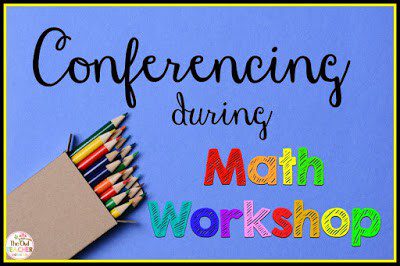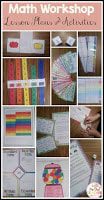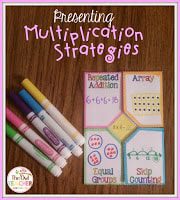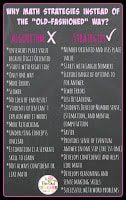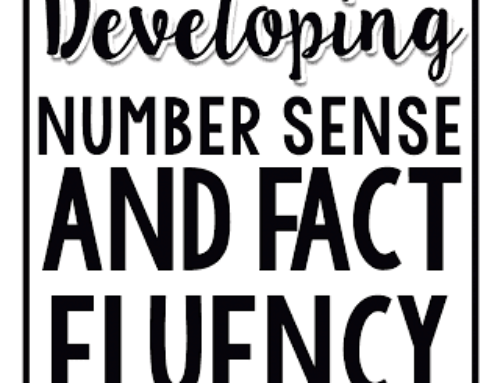Conferencing is a fundamental part of math workshop. It is the heart and soul of your teaching. Here is where we connect with our students and gain a deeper understanding of what makes them ‘tick.’
Before I explain conferring in math workshop, I want to first give a disclaimer. If you are new to math workshop, don’t feel the need or rush to grasp conferring. First begin understanding math workshop and its routines. Then once you feel comfortable with that, begin conferring. It’s better do a few things well, than everything poorly.
I love conferring. Conferring is where you gain knowledge of what students understand and what they are struggling with specifically. Then using that knowledge, you are able to create short, individualized lessons to pinpoint those specific needs.
You may wish to choose ahead of time who you want to confer with or just simply look around, observe students while they are working and decide then. Not all students need to be conferred with regularly nor does the student who you choose to confer with have to be a struggling student.
So what does conferring look like?
The first part is research. During this stage, you will approach a student quietly and sit next to him or her. During that time you will observe and take notes of what the student is trying to do. First initiate with a broad general question asking to explain what he or she is doing. For instance you may say, “Tell me about what you are working on.” You may ask probing questions as you progress, but remember you are searching for evidence of understanding and if the student can apply the concept appropriately. Scan the student’s work and reflect on any previous notes you have. You do not want to devote too much time to this stage nor do you want to get off track. Try to guide the student away from areas that won’t extend your knowledge.
After observing a student and determining what he or she knows, you then decide on what your teaching point will be and how you will teach it. You may choose to accept or alter a student’s strategy and/or process. Sometimes there may be no obvious lesson or other times there may be so many you don’t know where to start. Determine what teaching point is the most critical at that time and then note the other areas to touch on later.
After you have decided what your teaching point will be, explicitly tell and show the student. It’s important that you are coming across as a partner sharing knowledge. It’s also vital that you are providing specific, descriptive feedback of what the student has done well and what he or she may want to reconsider. You may wish to demonstrate or provide guided practice.
The last part of conferring with a student is to link. During this stage, you are renaming the strategy or teaching point using mathematical vocabulary and reminding the student to use it in the future. Sometimes I will even ask the student to restate my teaching point by asking, “Okay, tell me what you have just learned” or “Talk me through this problem here.” Students should then return to work and apply their new knowledge.
A few notes…
One thing I want to mention is that conferencing is meant to be brief. It’s not a tutoring session but more about taking something a student can almost do and giving that little nudge to doing it independently. We are more of an encourager that builds the much needed confidence. Sometimes there will be students who need more than just a nudge because, honestly, they just aren’t getting it. Conferencing is not the place for it. When that happens, we need to pull students into a group to reteach and reinforce for more targeted teaching. From time to time, you may also notice that several students (or even your entire class) are struggling with certain concepts. This is a great opportunity to take a step back and replan your mini-lessons. Lastly, you will always want to follow up with your students after a few days to see if they are still applying the teaching point from your conference.
Most importantly, conferring takes a little time to get use to. Don’t feel discouraged if you aren’t able to immediately meet with many students, keep them brief, or remember each step. Over time, with practice you will have it down with no problems! Just don’t give up because in the end, it’s worth it!
Click here for this great pack of FREE math centers, plus get tips and updates from me!
Mandy Gregory is a 2007 and 2012 Teacher of the Year. She has taught Kindergarten- 4th grades in both the general education and inclusion settings. She is currently a 1st grade Special Education teacher. She is the owner and creator of Mandy’s Tips for Teachers website (www.mandystipsforteachers.com) and has over 13 years of teaching experience. She is married with two beautiful children.

